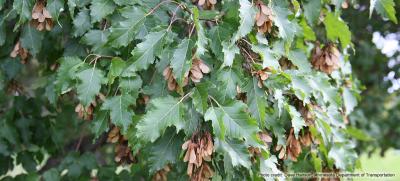- Community
- Services
-
Your Government
-
Column 1
- Agendas and Minutes
- Mayor & City Council
- Boards & Commissions
- City Charter
- City Projects
- City Calendar
Column 2
Column 3
-
Amur Maple
Amur maple is native to Japan and China. It was introduced to North America in the 1860s, and is frequently sold commercially as an ornamental and windbreak plant. A prolific seed producer, Amur maple is becoming invasive in the northern United States. Amur maple displaces native shrubs and understory trees in open woods, and shades out native grasses and herbaceous plants in savanna habitats.
Why remove Amur maple and other invasive plant species?
Invasive non-native plants displace native plants, which can reduce the ability of the plant community to support native fish and wildlife. For example, insects are often the food source for birds and reptiles. Many native insects are able to feed only on specific native plant species. If their preferred plants are crowded out by invasive plants, insect numbers can be dramatically reduced by the lack of sufficient food. This can subsequently cause a decrease in the animals that feed on them. In addition, Amur maple and other invasive species of woodland habitats can limit tree seedling establishment and regeneration of forests.
For more information about invasive species, visit the Minnesota DNR website


